
Sweet Shortcrust Pastry is one of the most well-known and important bases of pastry making, an incredibly versatile classic recipe used above all to make tarts and biscuits. Quick and easy to make at home, in its traditional version sweet shortcrust pastry is prepared with simple and commonly used ingredients such as flour, butter, eggs and sugar.
Buttery, elastic, crumbly and delicious, our sweet shortcrust pastry is easy to prepare and even easier to roll out and shape. We will show you how to make it using the classic method, starting with cold butter and sugar to which eggs and flour are then added. However, there is also a different way to mix the ingredients: this is the so-called sablée method, which involves working the butter and flour until you obtain a sandy mixture, to which sugar and eggs are then added.
What is Sweet Shortcrust Pastry?
Pâte sucrée—known as sweet shortcrust pastry—represents the delicious meeting point of European elegance and American innovation. While its roots lie firmly in classic French pâtisserie, where it's prized for its buttery, crumbly texture ideal for fruit tarts and custard pies, American bakers adopted and adapted this refined dough throughout the 20th century. As French culinary techniques gained popularity stateside through influential chefs like Julia Child, pâte sucrée became a staple in upscale bakeries and home kitchens alike. Americans embraced its rich, cookie-like crust, often using it as a base for modern takes on lemon tarts, chocolate ganache pies, and seasonal fruit creations. Today, pâte sucrée continues to blend Old World tradition with New World creativity, standing as a symbol of how classic European recipes can be reimagined to fit the flavors and flair of American dessert culture.
Pro Tips for The Best Shortcrust Pastry
- After forming the dough, wrap it in plastic and refrigerate for at least an hour. Chilling relaxes the gluten and firms up the butter, making the dough easier to roll out and helping prevent shrinkage during baking.
- When rolling out the chilled dough, aim for an even thickness to ensure uniform baking. Use gentle, even pressure to avoid cracking, and lightly flour your surface and rolling pin to prevent sticking.
- Handle the dough as little as possible to prevent developing too much gluten, which can lead to a tough crust. Mix just until the ingredients come together, and avoid excessive kneading.
- Allow the baked crust to cool completely before adding fillings, especially custards or creams. This prevents the fillings from melting or becoming runny, ensuring a well-structured tart.
What is The Difference Between Shortcrust Pastry and Sweet Shortcrust Pastry?
Traditional shortcrust is a neutral, flaky dough made with flour, butter, and water or egg, ideal for both savory dishes like quiches and sweet pies.
Pâte sucrée, on the other hand, includes sugar and egg yolks, giving it a rich, sweet, cookie-like texture perfect for fruit and custard tarts. While both serve as tart bases, pâte sucrée is specifically designed for desserts with a more refined finish.
What is The Secret for a Good Sweet Shortcrust Pastry?
The secret to a perfect sweet shortcrust pastry (pâte sucrée) lies in using high-quality ingredients and gentle handling. Chilling the dough before rolling helps relax the gluten and prevents shrinkage. Using cold, unsalted butter ensures a rich, crumbly finish.
Can I Swap Butter for Margarine?
Yes, you can swap butter for margarine in shortcrust and sweet shortcrust pastry, but expect some differences. Margarine has a higher water content and less fat than butter, which can affect the dough’s texture—making it less rich and slightly softer. For best results, use a firm, high-fat margarine designed for baking. However, keep in mind that butter provides better flavor and flakiness, so the taste and texture may not be quite as indulgent.
Why Did My Pastry Shrink?
Pastry shrinkage often happens when the dough is overworked, which develops gluten and makes it elastic, causing it to spring back during baking. Not chilling the dough enough before baking, stretching it to fit the tin instead of gently pressing it in, and skipping blind baking weights can also lead to shrinkage. Additionally, baking in a poorly preheated oven or at too low a temperature can cause the pastry to contract.
Do I Always Have to Blind Bake the Pastry?
You don’t always have to blind bake sweet shortcrust pastry, but it depends on the filling. Blind baking is essential for custard-based or no-bake fillings to ensure the crust is fully cooked and doesn't turn soggy. However, if your filling is firm and will bake for a long time (like a dense fruit tart), you can often skip blind baking. That said, blind baking generally results in a crisper, more stable base—so it’s a helpful step for most dessert tarts.
How I Avoid a Soggy Sweet Shortcrust Pastry?
To avoid a soggy bottom, especially when using moist fillings, blind bake the crust. Line the dough with parchment paper, fill with pie weights or dried beans, and bake until set. Remove the weights and bake a bit longer to achieve a golden, crisp base.
What Can I Use Sweet Shortcrust Pastry For?
Sweet shortcrust pastry (pâte sucrée) is perfect for a variety of elegant desserts. It's commonly used as the base for fruit tarts, lemon tart, chocolate ganache tart, and custard-filled pies like crème brûlée or frangipane tarts. Its cookie-like texture also makes it ideal for mini tartlets, sweet pastry shells, and decorative tart crusts. You can even use it to create festive treats like jam-filled linzer cookies or holiday tart bars. Its sweet, tender crumb complements creamy, fruity, and chocolatey fillings beautifully.
Can I Make Sweet Shortcrust Pastry Ahead of Time?
Yes, sweet shortcrust pastry can definitely be made ahead of time! You can prepare the dough, wrap it tightly in plastic wrap, and store it in the refrigerator for up to 3 days.
You can also blind bake the crust in advance and store it in an airtight container at room temperature for a day or two. Making it ahead saves time and enhances flavor as the dough rests.
Does it Freeze Well?
Yes, sweet shortcrust pastry freezes very well, both raw and baked. You can freeze the raw dough by wrapping it tightly in plastic wrap and placing it in a freezer bag—it’ll keep for up to 2 months. When ready to use, thaw it overnight in the fridge before rolling. You can also freeze a fully baked tart shell, ideally wrapped and stored in an airtight container. Freezing doesn’t compromise the texture much, making it a great make-ahead option for desserts.
How to Store Sweet Shortcrust Pastry
To store leftover sweet shortcrust pastry, wrap any unused raw dough tightly in plastic wrap and refrigerate for up to 3 days.
If you've already baked the crust or a filled tart, store it in an airtight container—refrigerate if it contains perishable fillings (like cream or custard), and keep at room temperature if it’s plain or filled with jam or chocolate, consuming within 2–3 days for best freshness.
Ingredients
How to Make Sweet Shortcrust Pastry
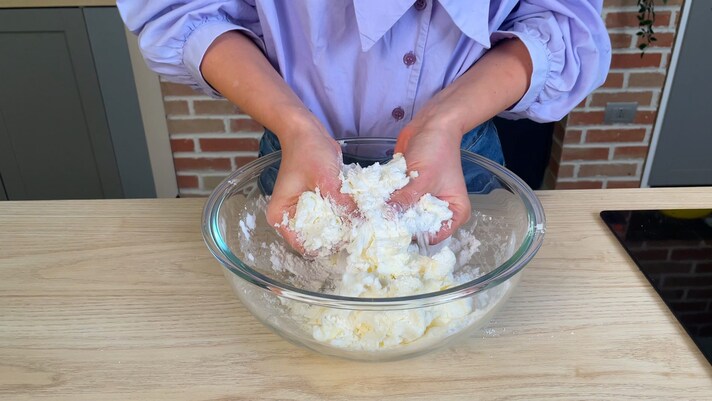
To prepare the sweet shortcrust pastry, start by mixing the diced butter, which must be cold but workable, and the sugar with your hands. We chose powdered sugar, which makes the pastry even softer and more crumbly, but alternatively, classic white granulated sugar or brown sugar will also work just fine.
To prepare the sweet shortcrust pastry, start by mixing the diced butter, which must be cold but workable, and the sugar with your hands. We chose powdered sugar, which makes the pastry even softer and more crumbly, but alternatively, classic white granulated sugar or brown sugar will also work just fine.
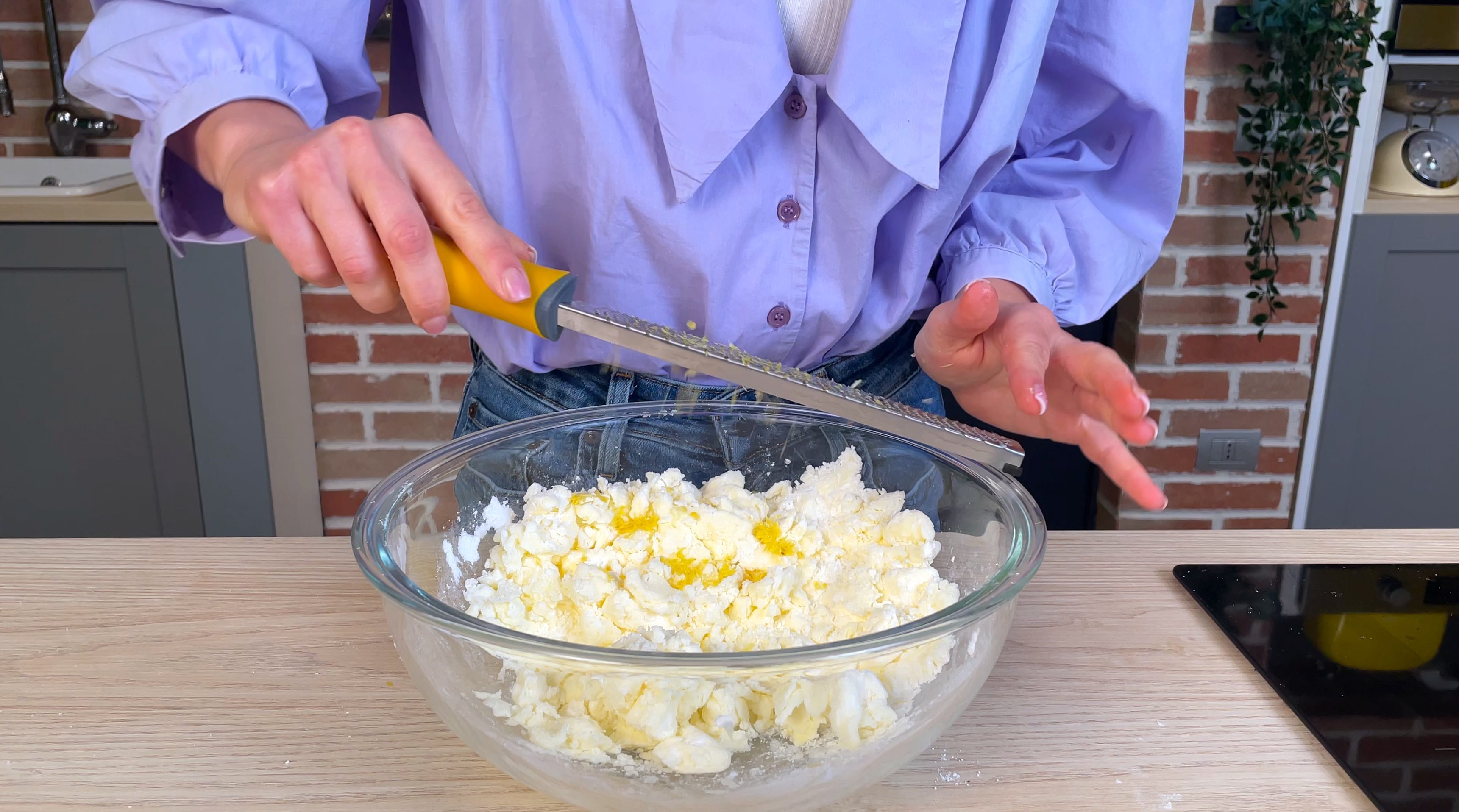;Resize,width=712;)
Then add the chosen flavors, in our case lemon zest and the seeds of a vanilla bean. Also add a pinch of salt: in addition to enhancing the flavors, it makes the pastry more golden when cooked.
Then add the chosen flavors, in our case lemon zest and the seeds of a vanilla bean. Also add a pinch of salt: in addition to enhancing the flavors, it makes the pastry more golden when cooked.
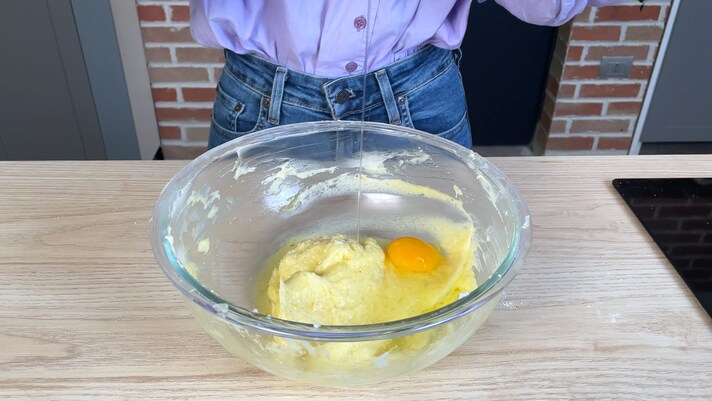
Add the eggs at room temperature, one at a time. Mix well until you get a smooth mixture.
Add the eggs at room temperature, one at a time. Mix well until you get a smooth mixture.
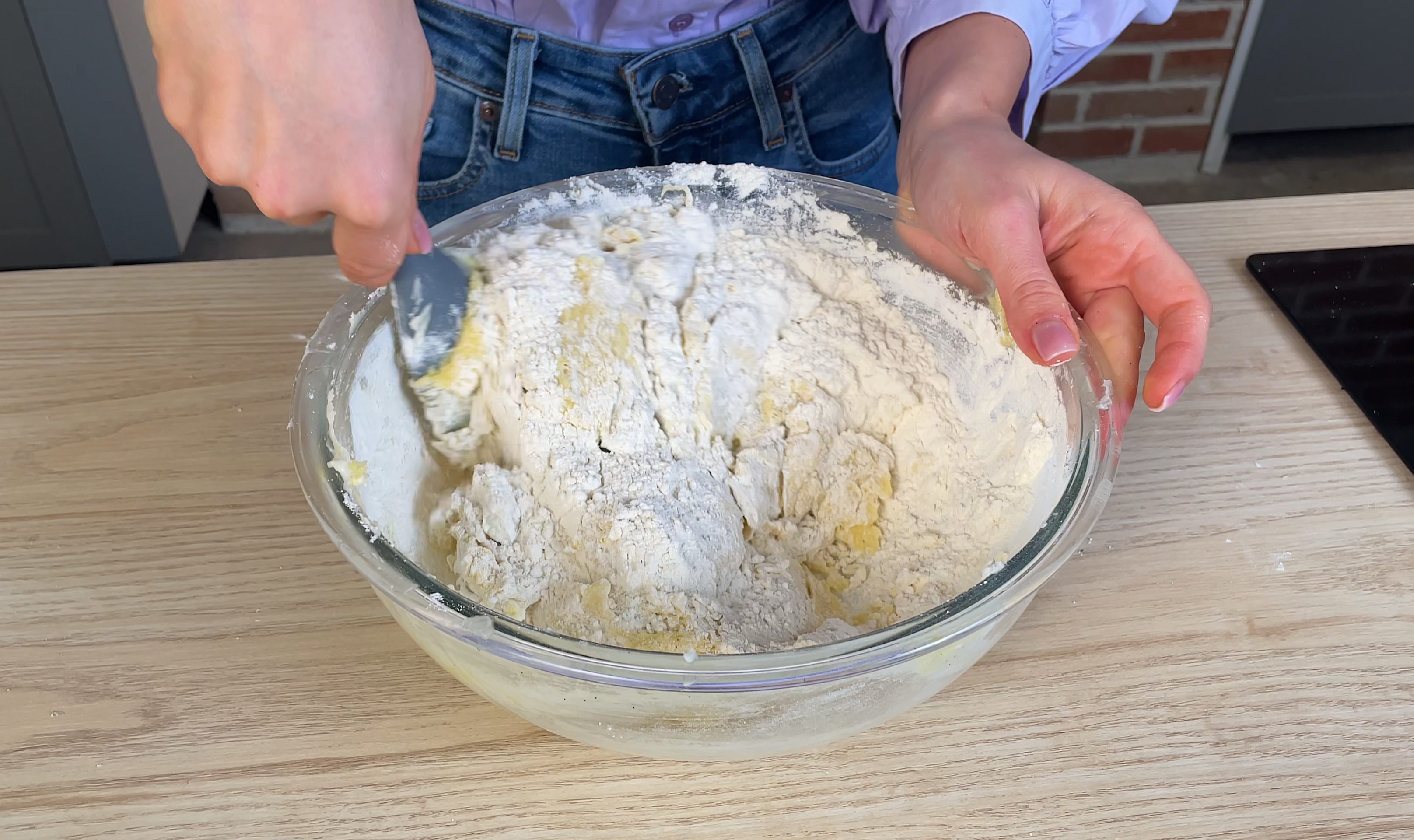;Resize,width=712;)
At this point pour in the flour and continue working in the bowl.
At this point pour in the flour and continue working in the bowl.
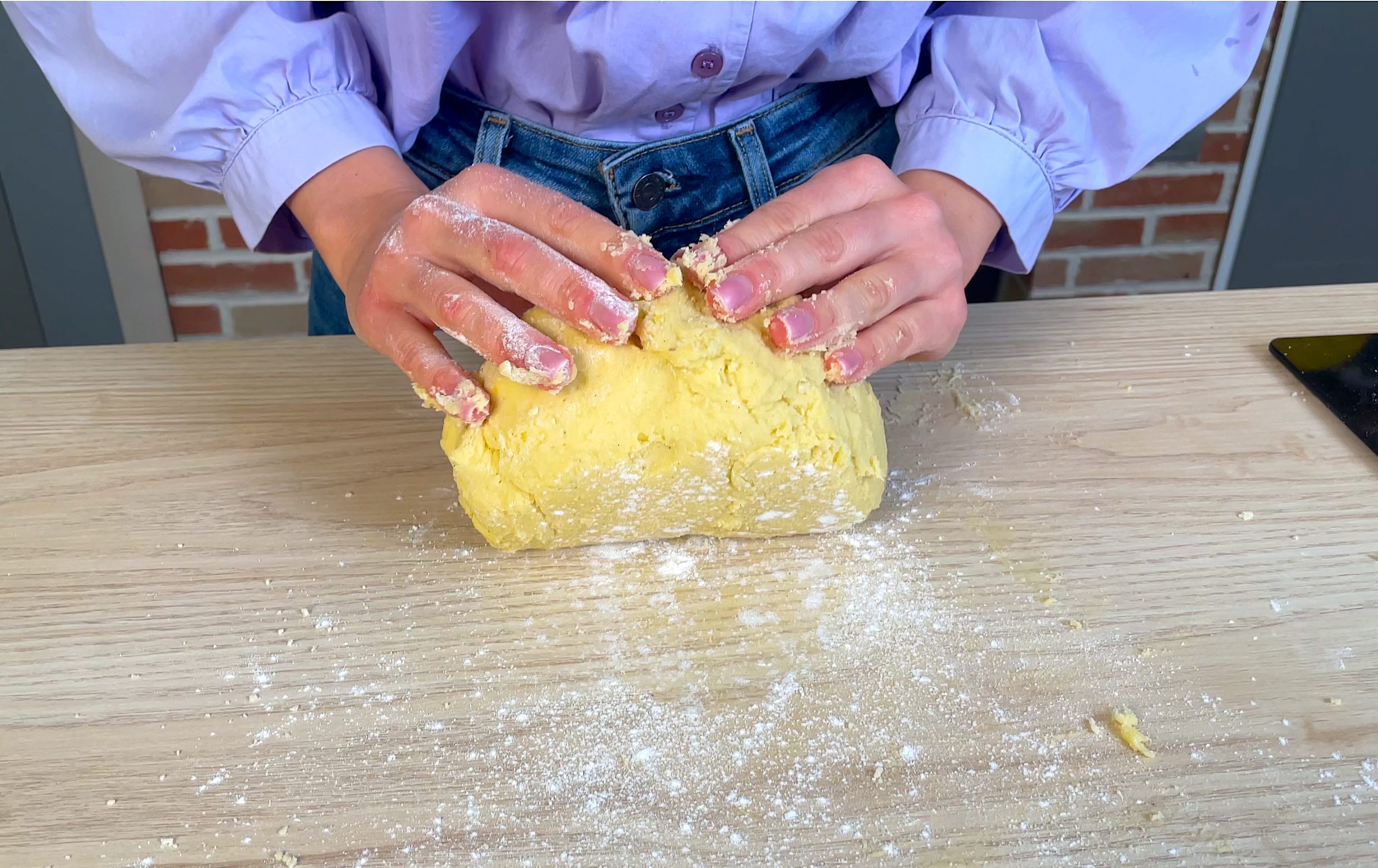;Resize,width=712;)
As soon as the mixture begins to take on consistency, transfer it to the work surface and knead it quickly with your hands. Don't work it too much, just enough time to compact it.
As soon as the mixture begins to take on consistency, transfer it to the work surface and knead it quickly with your hands. Don't work it too much, just enough time to compact it.
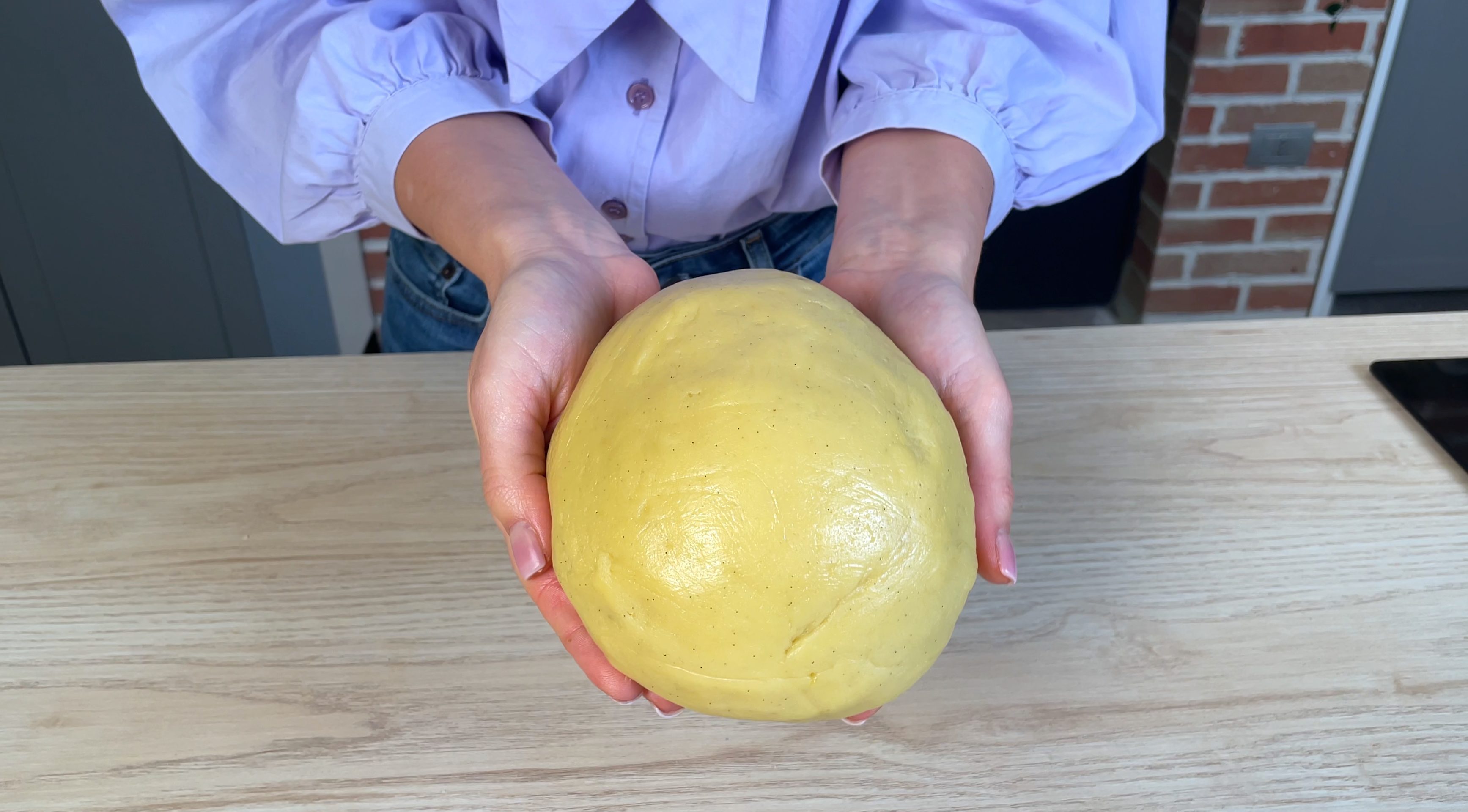;Resize,width=712;)
Once you have obtained a smooth, homogeneous and non-sticky dough, your shortcrust pastry is ready. Before you can use it to prepare tarts, biscuits, crumbles and strudels, you will have to leave it to rest in the refrigerator for at least 1 hour, well covered with cling film.
Once you have obtained a smooth, homogeneous and non-sticky dough, your shortcrust pastry is ready. Before you can use it to prepare tarts, biscuits, crumbles and strudels, you will have to leave it to rest in the refrigerator for at least 1 hour, well covered with cling film.
;Resize,width=767;)
